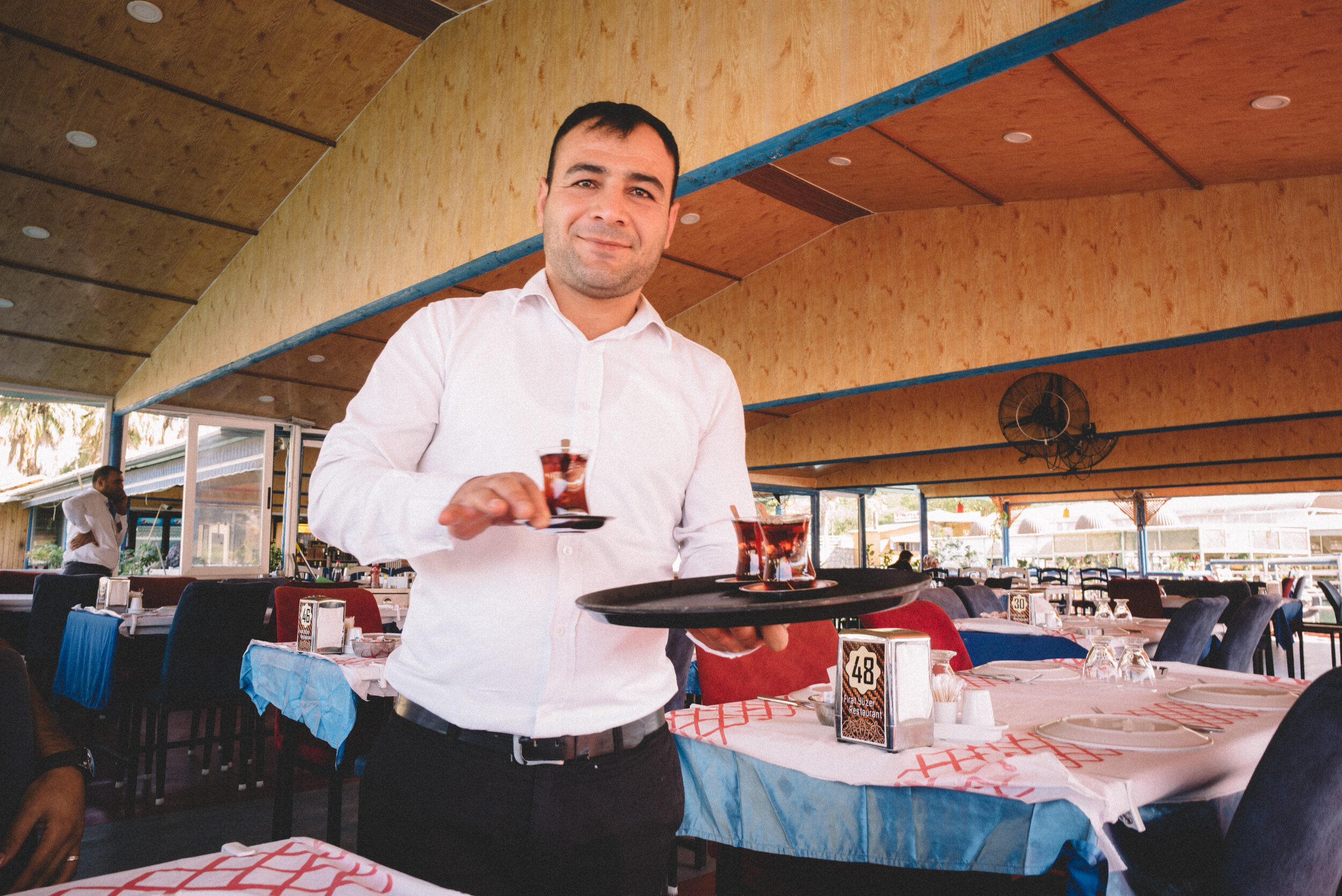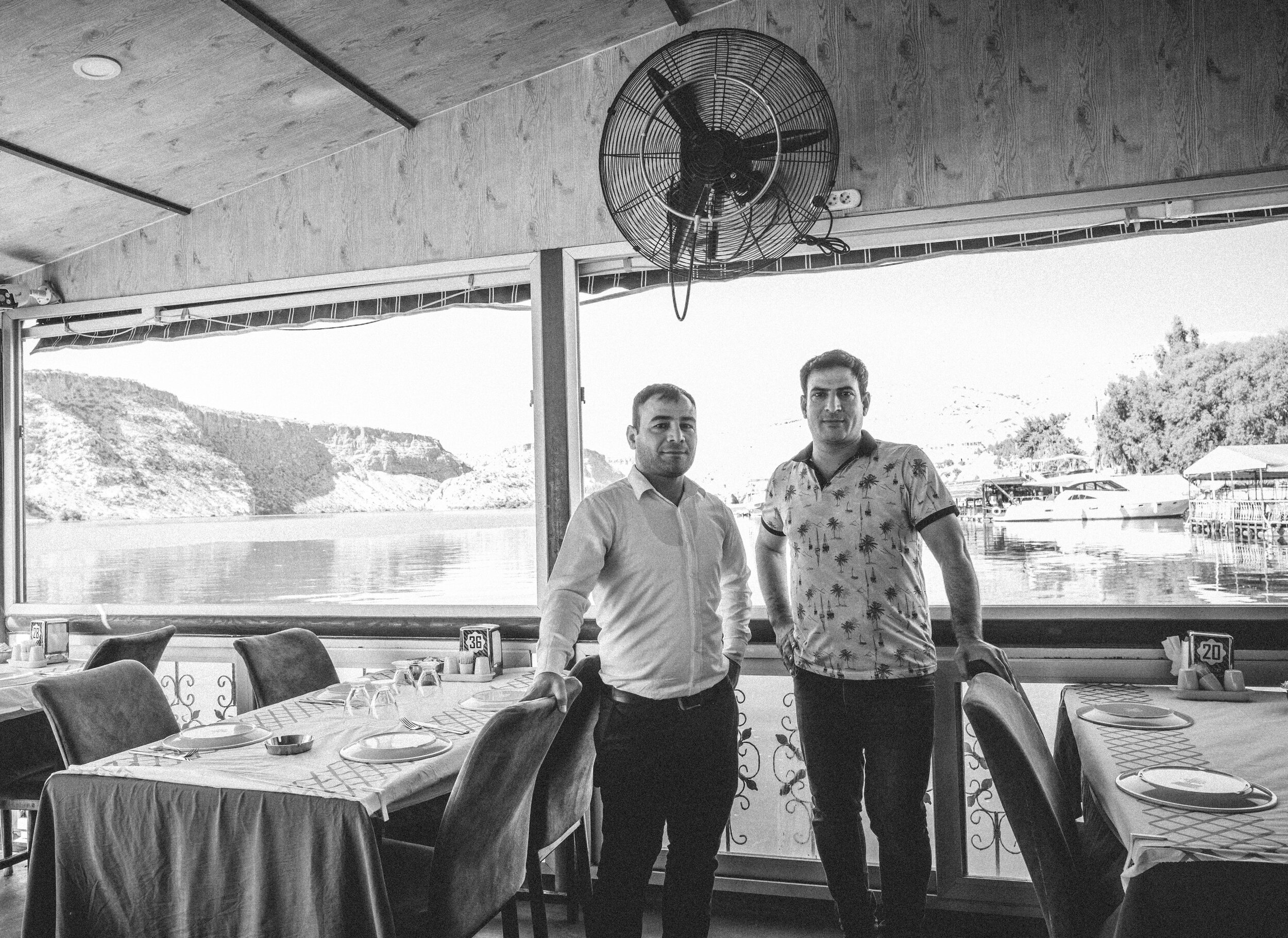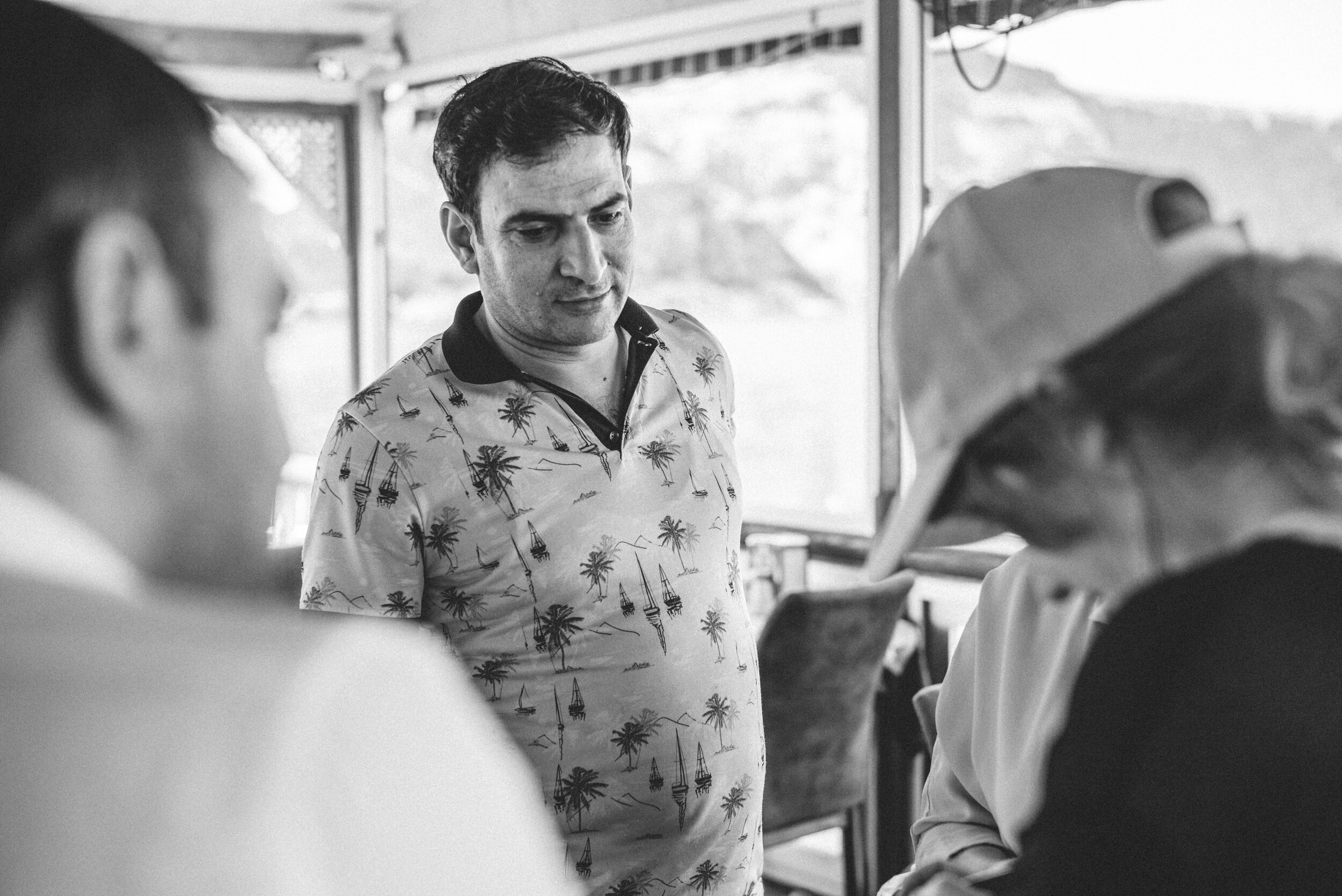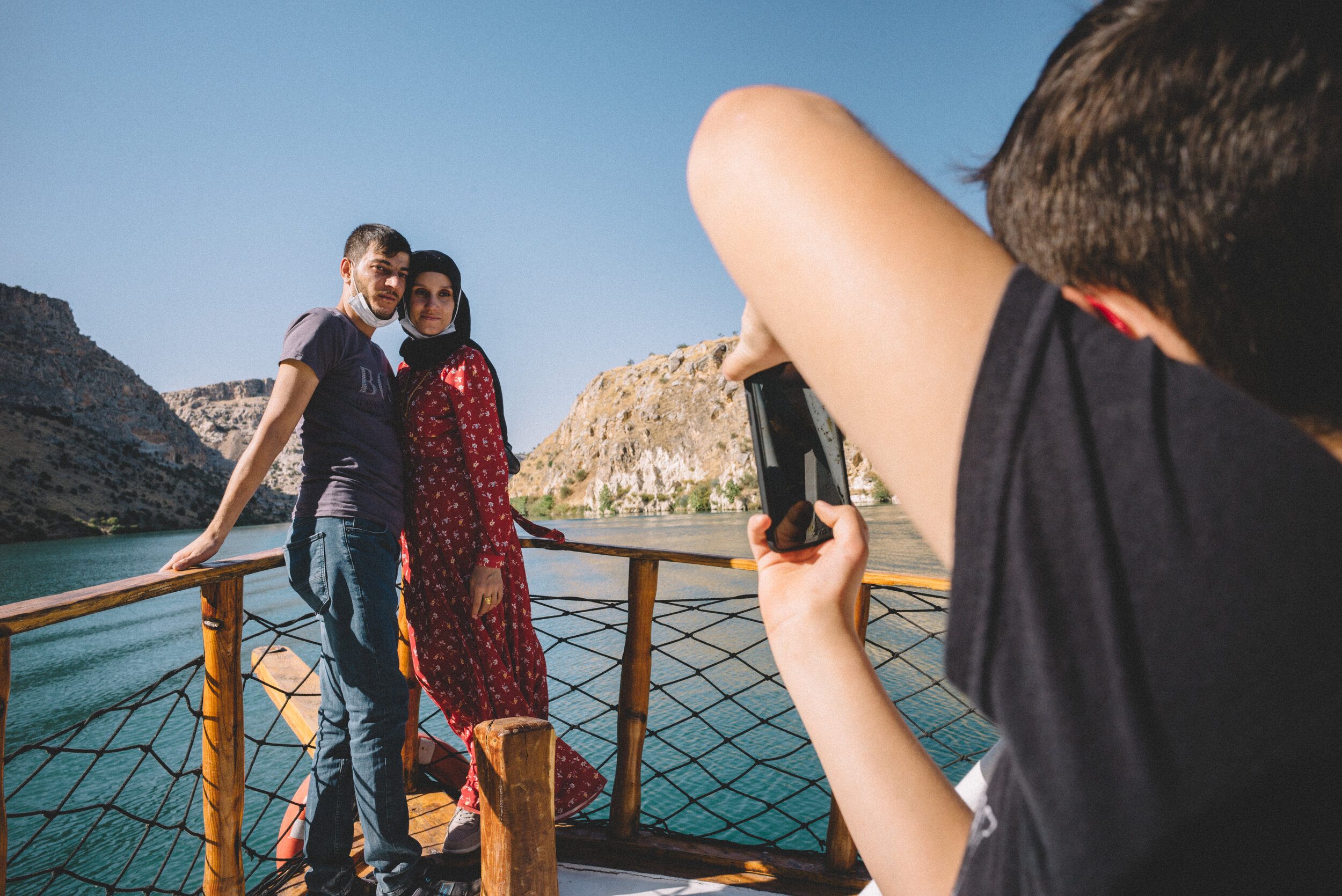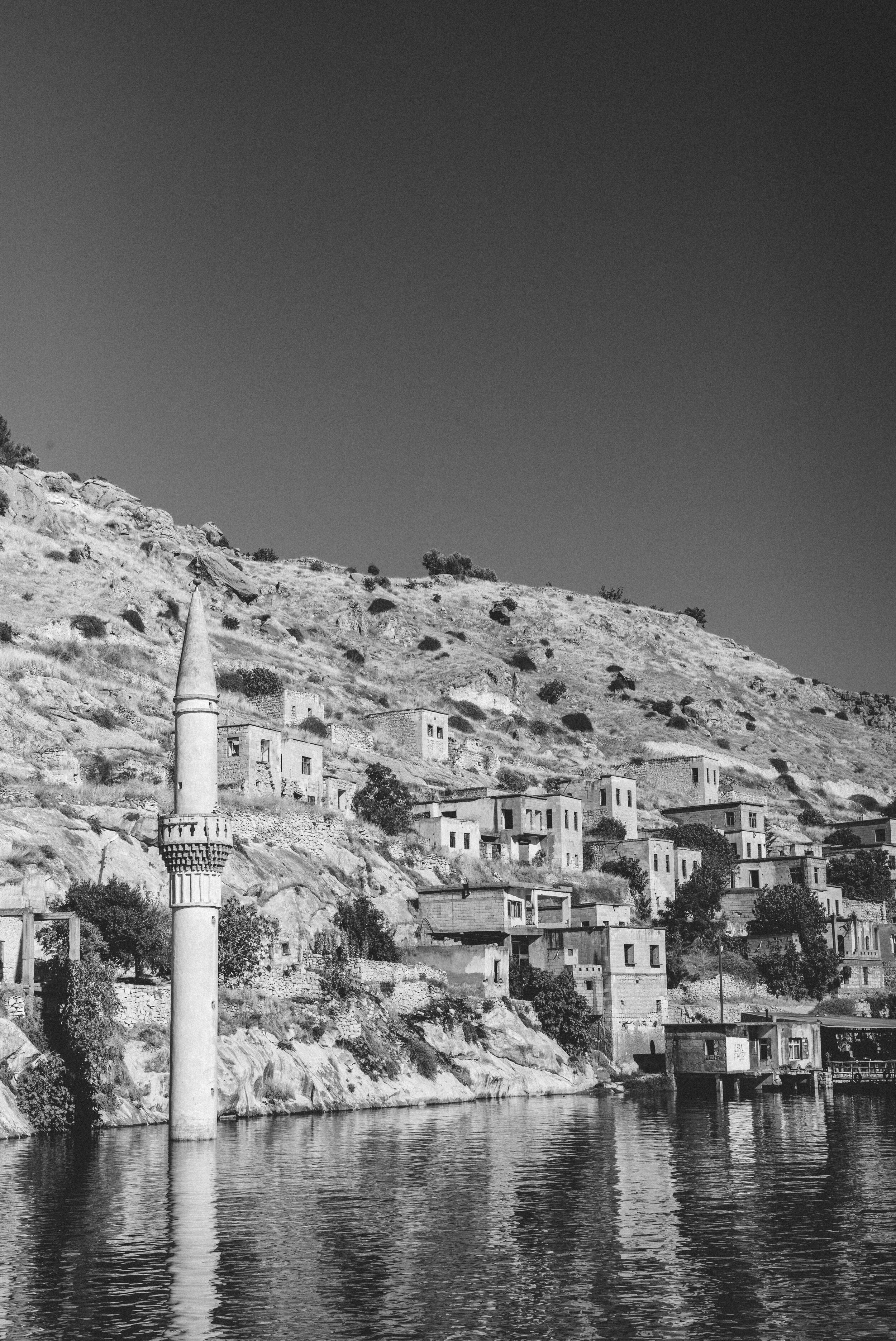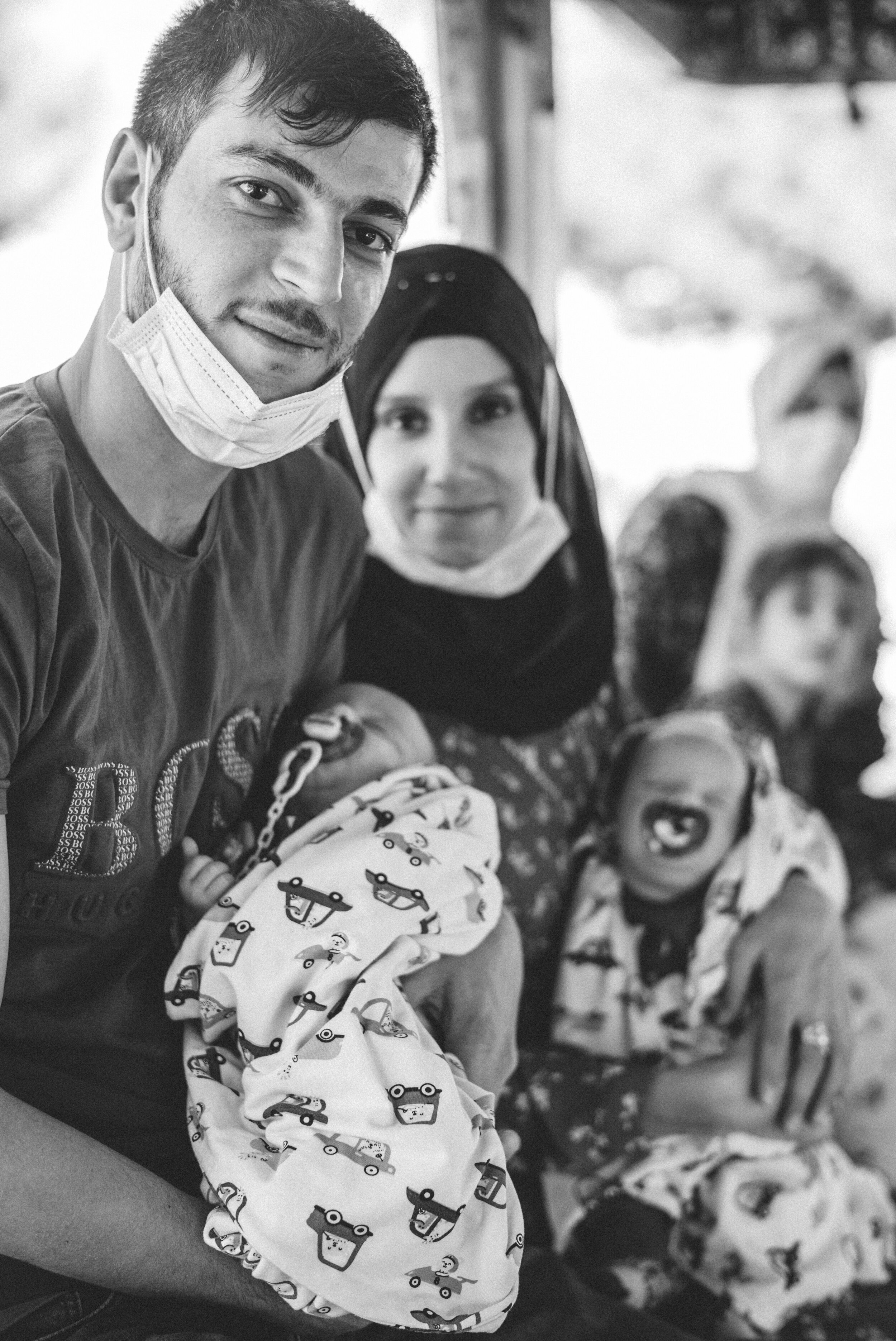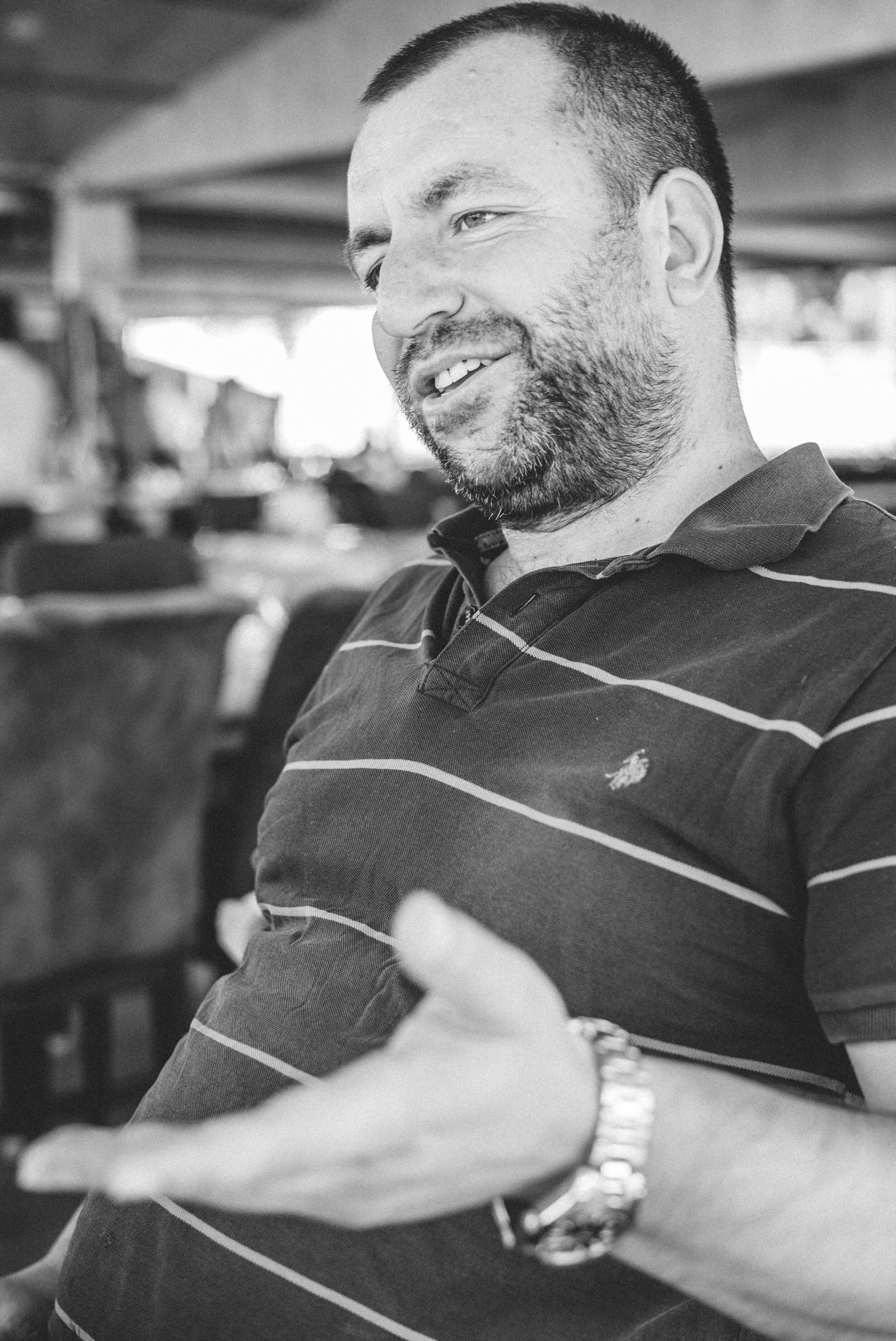Halfeti, 7 October 2020
Slowly going forward, then going back fast. Where-ever it took us a full day to cover a substantial distance on foot, cars could rush through the same amount of kilometers in mere minutes - even taking us in the exact reverse direction (ouch!), back past Birecik. We’re on a day trip off of our walk. These pistachio fields offered a wildly different view in the accelerated pace.
“But, weren’t we just here?”, I think. I’m sitting in the back of a car. We’re bing driven from Nizip to Halfeti for a visit. We’d missed the very existence of this site - a blind spot in our preparation - another historical location that is well-loved amongst tourists in any regular year. We’re nervous about having missed such a location that might provide a meaningful insight into this part of Turkey’s recent history. It was hard, travelling on foot earlier, to figure out how to walk so that we’d progress in our direction as well as gain in understanding. So we’re doing a double-take and retracing part of the way on this motorized detour, just for the day.
Halfeti is a farming district, with the city once built on the banks of the Euphrates river. It now sits mostly submerged under the waters of a large dam. It was constructed as part of the Southeastern Anatolia Project (known for short as the GAP), a large infrastructure plan to aid irrigation in the larger Sanliurfa province and agriculture. Old Halfeti town was flushed in the 1990s.
Few things are as romantic as a sunken ancient city - it seemed to me that no amount of tacky music, or mass-marketed double tiered tourist barges can take away from the charm, especially in the eyes of the several in-love couples on the boat that takes is to the submerged çami (mosque). When we visit, Halfeti is quiet. There are no international tourists because of the pandemic.
We’re being taken to the city, which lays hidden in some mountainous ridge neither I nor Daniel would have suspected from our walks through the much flatter fistik fields, by Kareem and his wife Nadra. They are Syrian refugees based now in Gaziantep, where they focus on film-making. Daniel and Kareem worked together some years ago, and the project was a great way to reconnect. The couple have never been to Halfeti before either, and are happy to stroll around with us. They talk about the transition from Syria to Turkey, their new life with a residence permit and new passport. Nadra, who studies in Gaziantep, speaks Turkish well and acts as our interpreter. She enjoys making her bee-line entrance into a floating restaurant, clinging to the first waiter she sees and all but ordering him: “Who's called Ibrahim here? One of them works here, we heard. Can he get a picture?" Three men will be chartered in this way. There’s even a fourth one here, but it’s the establishment’s owner claiming to be too busy with a meeting.

